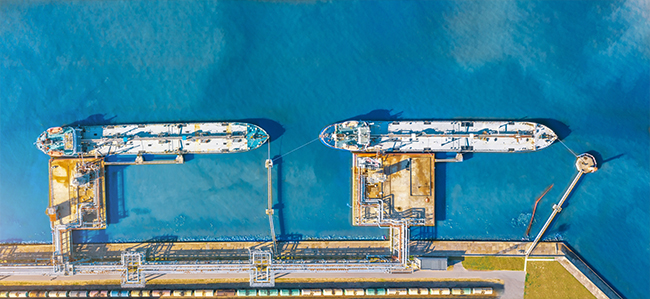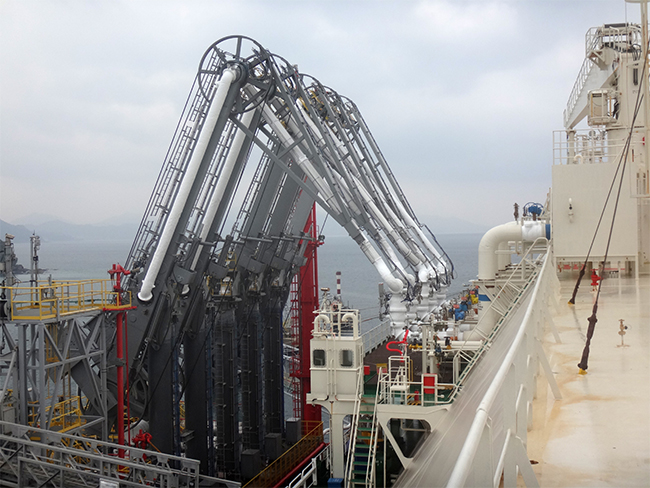Cables in potentially explosive atmospheres
What is ATEX?
igu-blog-adm | 21. January 2021

Sometimes you hear the term “explosive environment” and in this context also the term “ATEX”. Today we will take a closer look at what this is all about and why it is related to cables.
What is a potentially explosive environment?
A potentially explosive environment is a place where mixtures of vapours, gases or dust combine in such a way that it can ignite under certain conditions. Our example is about a ship loader. With its help, ships can be loaded or unloaded with liquefied gas.

The potentially explosive area here is the loading point where the gas is pumped onto the ship. There is a risk of the gas entering the atmosphere and igniting.

What can cause an explosion?
There are various reasons for explosions. For example, open fire, hot surfaces or sparks.
In our case, we focus on the topic of sparks. Sparks can also occur when switching current or a short circuit.
What is the requirement for a cable?
Cables are also needed in these potentially explosive environments.
To reduce or even eliminate the risk of explosion, the cable must ensure that ignition sources are avoided. We achieve this specification by using flame-retardant materials and a resistant outer jacket that comes close to the specifications of a rubber hose cable.

In our example of the ship loader, we use a PUR cable to additionally ensure the energy chain capability. Alternatively, a cable with TPE outer material can be used. Both materials have the best specifications in the energy chain and come closest to the specifications of the rubber hose cable. A gusset-filling extruded cable is advantageous in order to optimise gas tightness at the connections.

What is ATEX?
ATEX stands for Atmosphère Explosible. For many, it is the abbreviation for describing the directives for placing explosion-proof, electrical and mechanical equipment and systems on the market.

Under the term ATEX one often also finds the term “intrinsically safe”. This refers to the avoidance of ignition by electrical devices. This ignition is avoided by reducing the energy within a device below the threshold needed for ignition. The most important goal here is to avoid an explosion.
Conclusion
It doesn’t always require a special design or special cable just because the circumstances sound complicated. Often our chainflex catalogue goods are sufficient to meet your requirements and safely match your applications in potentially explosive environments.
Is your application a loading arm for ships, or do you have other applications where you need cables for the potentially explosive area? We have the right solution for you to use in the e-chain.
Contact us!
